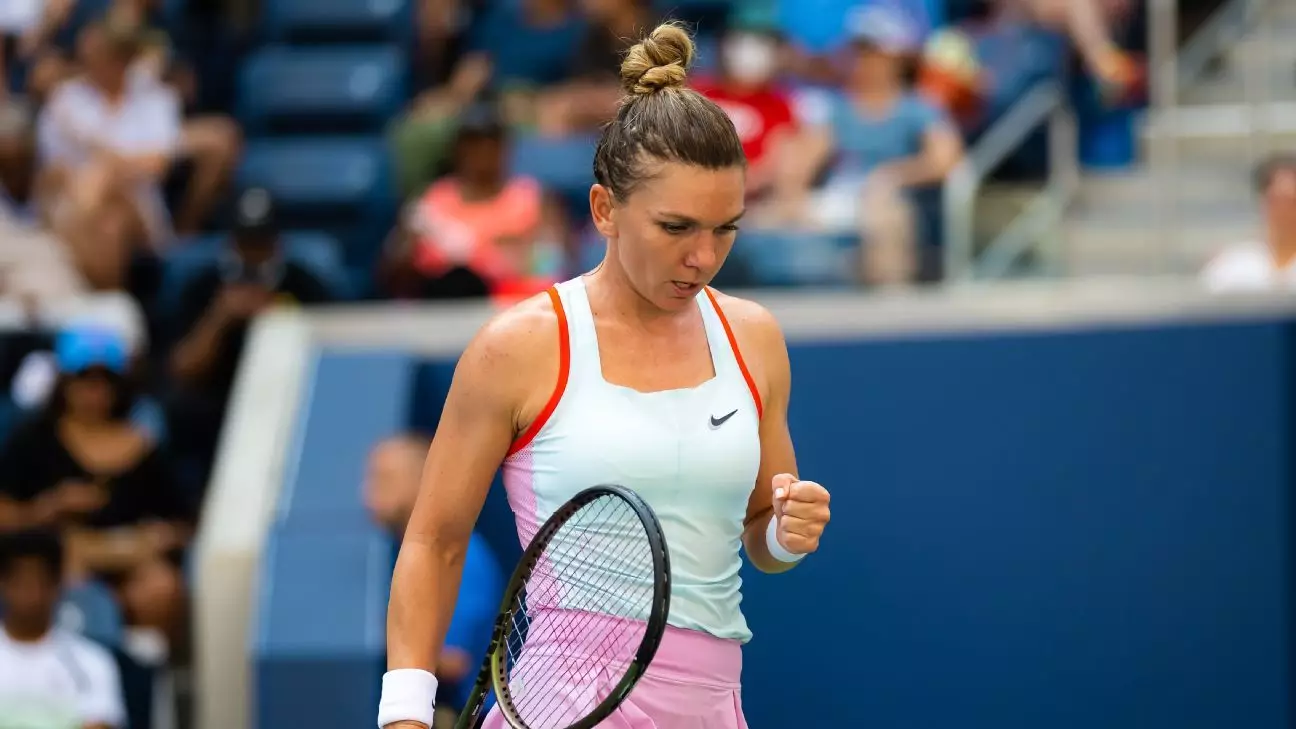In an emotional announcement that reverberated through the tennis community, two-time Grand Slam champion Simona Halep declared her retirement from professional tennis at the age of 33. This decision came in the wake of her first-round defeat against Lucia Bronzetti during the Transylvania Open, a tournament that marked her return to her native Romania. Halep’s complex sentiments, articulated through her words, reflect a mixture of joy and sadness. „My soul is at peace with this decision,“ she expressed, acknowledging the painful reality of her enduring injuries and recognizing the limitations that have hindered her once prodigious abilities.
Halep’s career has been marred by injuries; the recent career-altering challenges began to mount as she dealt with knee and shoulder pain, preventing her from competing as fiercely as she once did. In essence, her body, once capable of propelling her to the summit of women’s tennis, could no longer bear the rigors of professional play. After reaching No. 1 in the WTA rankings in 2017, Halep found herself in a drastically different situation, currently positioned at the 870th rank, a stark contrast that highlights the personal and physical battles she has faced over the years.
Her illustrious career included remarkable victories at major tournaments, including her triumphs at Wimbledon and the French Open. Yet, her last appearance at a Grand Slam came in 2022 during the US Open, where she faced a harrowing defeat and subsequently tested positive for the banned substance Roxadustat. The fallout from this incident has plagued her legacy, sparking debates over doping in sports and the implications of stringent anti-doping regulations.
Following her suspension, Halep embarked on a challenging journey to return to the sport she loves. Initially slapped with a four-year ban that was later reduced to nine months, her exemption became a symbol of both resilience and ongoing scrutiny. Halep maintained her innocence, attributing the positive test to a contaminated supplement, yet the Court of Arbitration for Sport delineated that while her violations were not intentional, they were also a result of negligence in judgment. This complicated narrative of redemption and suspicion has clouded her return to the tour.
Upon her return during the Miami Open, Halep was not the same player who had once dominated the courts. With only six matches under her belt since her comeback, it became painfully evident to both her and her fans that the extraordinary qualities that once made her a fierce competitor had dimmed. In her retirement announcement, Halep poignantly articulated the reality of the arduous journey back: „To be competitive again requires much more, and at this moment, it’s no longer possible.“
Though her final match may not have embodied the brilliance she had previously showcased throughout her career, Halep leaves behind an impressive legacy. Accumulating 24 singles titles and more than $40 million in prize money, her impact on the sport will be remembered fondly. Halep’s initiative to play her farewell match in front of her home crowd served as a touching homage to the unwavering support she has received throughout her career.
Halep’s journey is a reminder of the fragile nature of athletic careers, filled with triumphs and trials. Her resignation from competitive play is not merely an ending but also signifies a new chapter, leaving space for reflection on the highs and lows that defined her pathway in professional tennis. As she steps away from the court, one can hope that her story inspires future generations of athletes to embrace persistence, confront adversity, and cherish their journeys in sports.


Napsat komentář